- 1-Understanding-Bounce-Class-Essentials
- 2-Class-Instructor-Expertise-and-Safety
- 3-Equipment-Quality-and-Maintenance
- 4-Class-Structure-and-Intensity-Level
- 5-Health-Benefits-and-Physical-Considerations
- 6-Community-and-Class-Environment
- 7-Pricing-Options-and-Membership-Flexibility
- 8-Trial-Classes-and-Cancellation-Policies
- 9-Location-Convenience-and-Accessibility
- 10-Additional-Services-and-Resources
1. Understanding Bounce Class Essentials
Before committing to a bounce class, it’s crucial to grasp what these classes entail. Bounce classes typically involve trampoline-based fitness workouts that blend cardio, strength, and balance training in an enjoyable environment. Unlike traditional exercise routines, bounce classes add an element of fun while targeting muscle groups often neglected in conventional workouts. This unique combination makes bounce classes appealing for those seeking both fitness and entertainment.
Many beginners overlook understanding the class’s core concept, which can affect their experience negatively. For example, a friend of mine once joined a class expecting a low-impact yoga session but found themselves in an intense trampoline cardio workout. Knowing what to expect helps set realistic goals and improves overall satisfaction.
Why Knowing the Basics Matters
Understanding the basic movements, typical class duration, and the kind of results you might expect is essential. These details not only prepare you mentally but also help in choosing the right level of class to match your fitness and skill level. Bounce classes vary widely, from gentle beginner sessions to high-intensity interval training on trampolines.
2. Class Instructor Expertise and Safety
The quality of instruction directly influences the benefits and safety of a bounce class. Before joining, inquire about the instructor’s qualifications and experience with trampoline fitness. Certified trainers bring not only knowledge but also an understanding of safety protocols, which reduces the risk of injuries.
One story from a popular trampoline fitness forum highlighted a participant who suffered an avoidable injury because the instructor neglected to emphasize proper landing techniques. This underscores how crucial instructor expertise is in protecting participants.
Evaluating Safety Measures
Safety goes beyond instructor skills. Check if the facility enforces rules like warm-up routines, supervised sessions, and safety equipment such as grip socks or padded areas around trampolines. Reliable bounce classes prioritize participant well-being and create a secure environment for all fitness levels.
3. Equipment Quality and Maintenance
Trampolines are the heart of bounce classes, so the equipment’s quality and upkeep are critical. A well-maintained trampoline not only enhances performance but also ensures safety during vigorous exercises. When visiting a potential class venue, observe if the trampolines show signs of wear or if the padding is intact.
A case in point involved a trampoline park that quickly gained a reputation for safety issues due to poorly maintained equipment, leading to multiple complaints. On the contrary, reputable places routinely inspect and update their gear, creating confidence among participants.
What to Look For in Equipment
Beyond trampolines, other accessories such as balance bars and supportive mats should be in excellent condition. Modern bounce classes often incorporate technology like heart rate monitors or resistance bands to diversify workouts, adding value to your experience.
4. Class Structure and Intensity Level
Different bounce classes come with varying structures—some focus on continuous cardio, others integrate strength training or flexibility exercises. Knowing how the class is organized helps ensure it fits your personal fitness goals and physical capacity.
For example, a busy professional aiming for fat loss may prefer a high-intensity interval bounce class, whereas someone recovering from injury might choose a gentle, low-impact session. Misalignment between class intensity and personal ability can lead to burnout or injury, so it’s worth probing these details upfront.
Understanding Class Progression
Good bounce programs often include progressive levels, allowing you to advance as your fitness improves. Asking about how the class evolves over weeks or months reveals if the program is designed with long-term results in mind.
5. Health Benefits and Physical Considerations
Bounce classes offer many health advantages, including improved cardiovascular fitness, enhanced balance, stronger muscles, and better joint mobility. The low-impact nature of trampoline workouts also makes them suitable for individuals with joint concerns, offering a fun alternative to high-impact exercises like running.
However, it’s essential to consider personal health conditions before joining. People with certain cardiovascular or musculoskeletal conditions should consult a healthcare professional and communicate with the instructor about modifications.
Personalized Adaptations
Some bounce classes accommodate various fitness levels and medical needs by offering tailored modifications. These adaptations maximize benefits while minimizing risks, ensuring that even those new to exercise or with physical limitations can participate safely.
6. Community and Class Environment
The social aspect of bounce classes can significantly enhance motivation and consistency. Many participants find the camaraderie within these classes encourages regular attendance and creates a positive workout atmosphere.
A well-known trampoline fitness group shared stories of members forming lasting friendships and support networks, making their fitness journey more enjoyable and sustainable.
Assessing the Atmosphere
Visiting a class or reading reviews can help gauge the environment—whether it’s competitive, friendly, or casual. The right vibe can turn exercise into a joyful experience rather than a chore.
7. Pricing Options and Membership Flexibility
Cost is often a deciding factor. Before signing up, compare pricing packages, drop-in rates, and any membership commitments. Some facilities offer trial classes or pay-as-you-go options, which can be beneficial if you prefer flexibility.
Additionally, check if there are any hidden fees or restrictions. Transparent pricing reflects the professionalism of the service and helps you avoid unpleasant surprises.
Balancing Cost and Value
Remember, the cheapest option is not always the best. Investing in a reputable bounce class with certified instructors and quality equipment often delivers better long-term results and safety assurances.
8. Trial Classes and Cancellation Policies
Many bounce studios offer trial classes—an excellent opportunity to experience the workout firsthand without a major commitment. Utilize these to assess if the class suits your expectations and fitness needs.
Equally important is understanding cancellation and refund policies. Life happens, and flexibility in scheduling can save stress and money.
Making Use of Trials
Approach trial classes with an open mind, focusing on how your body responds and whether the class culture fits your personality. Taking advantage of these trials prevents rushed decisions and ensures satisfaction.
9. Location Convenience and Accessibility
Practical considerations like location and ease of access impact your ability to attend regularly. A well-located bounce class near your home or workplace reduces barriers to consistency.
Check if the facility offers parking, public transit access, or flexible class times to suit your schedule. These factors contribute significantly to maintaining a steady fitness routine.
Accessibility for All
Some bounce classes cater specifically to seniors or people with disabilities by ensuring the facility is wheelchair accessible or providing adapted equipment. Knowing these details beforehand is crucial for inclusive participation.
10. Additional Services and Resources
Beyond the basic class, some studios provide extras like nutrition advice, personalized coaching, or online tutorials. These add value by supporting your overall wellness journey beyond the trampoline workout.
For example, Trampoline Zone offers not only bounce classes but also curated recommendations for equipment, apparel, and professional services that complement your fitness lifestyle. This holistic approach helps you get the most out of your investment.
Leveraging Extra Benefits
Engaging with additional resources fosters a comprehensive fitness experience. Whether it’s recovery tips or community events, these services deepen your commitment and enrich your workout routine.



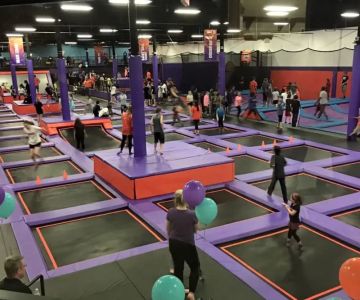
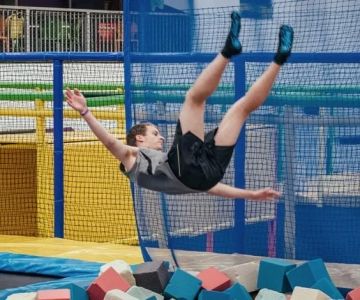
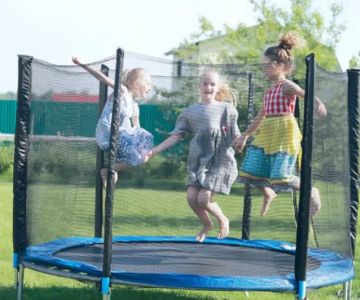

 Pump It Up Lake Forest Kids Birthday and More4.0 (280 reviews)
Pump It Up Lake Forest Kids Birthday and More4.0 (280 reviews) Urban Air Trampoline and Adventure Park4.0 (349 reviews)
Urban Air Trampoline and Adventure Park4.0 (349 reviews) Church Street Plaza4.0 (731 reviews)
Church Street Plaza4.0 (731 reviews) Fun City Adventure Park3.0 (162 reviews)
Fun City Adventure Park3.0 (162 reviews) Riki Tiki's Indoor PlayGround4.0 (35 reviews)
Riki Tiki's Indoor PlayGround4.0 (35 reviews) Urban Youth Park - South Bay4.0 (107 reviews)
Urban Youth Park - South Bay4.0 (107 reviews) Are Trampoline Parks Safe for Kids? Essential Guide for U.S. Parents
Are Trampoline Parks Safe for Kids? Essential Guide for U.S. Parents How Often Should You Replace Trampoline Springs? Tips for Proper Maintenance
How Often Should You Replace Trampoline Springs? Tips for Proper Maintenance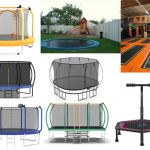 How Much Is a Trampoline? A Detailed Guide to Trampoline Costs and Buying Tips
How Much Is a Trampoline? A Detailed Guide to Trampoline Costs and Buying Tips Bounce Techniques for Stronger Legs: Effective Exercises and Tips
Bounce Techniques for Stronger Legs: Effective Exercises and Tips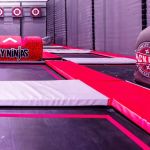 Essential Music Gear for Trampoline Dance: Complete Guide
Essential Music Gear for Trampoline Dance: Complete Guide Fun STEM Experiments Using Trampolines to Spark Curiosity and Learning
Fun STEM Experiments Using Trampolines to Spark Curiosity and Learning